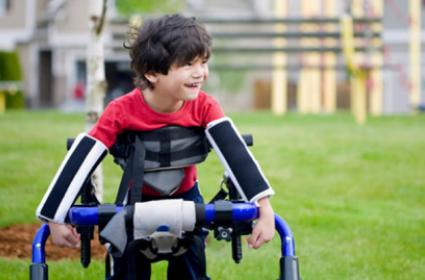What is Cerebral Palsy: Causes and its Treatment

A group of disorders known as cerebral palsy affect posture, muscular tone, and movement. It is brought on by harm to the developing, immature brain, most frequently before birth. Infancy or the preschool years are when signs and symptoms first develop. Generally speaking, cerebral palsy results in movement impairment that is accompanied by heightened reflexes, floppiness or stiffness of the limbs and trunk, unusual posture, involuntary motions, unstable walking, or some combination of these.
People who have cerebral palsy frequently experience eye muscle imbalance, which causes their eyes to not focus on the same thing, as well as swallowing issues. Due to muscle stiffness, they may also have less range of motion at different joints throughout their bodies.
Cerebral palsy can have a wide range of causes and functional implications. While some cerebral palsy sufferers can walk unaided, others do. Intellectual disability can affect some persons but not others. The presence of epilepsy, blindness, or deafness is also possible. Cerebral palsy is a chronic condition. Although there is no cure, medications can help function.
Symptoms:
Signs and symptoms of cerebral palsy can vary from person to person. Cerebral palsy can affect the whole body, or it might be limited primarily to one or two limbs, or one side of the body. Generally, signs and symptoms include problems with movement and coordination, speech and eating, development, and other problems.
· Lack of balance and muscle coordination
· Slow, writhing movements
· Tremors or jerky involuntary movements
· Difficulty with sucking, chewing or eating
· Delays in speech development
· Excessive drooling or problems with swallowing
· Delayed growth, resulting in smaller size than would be expected
· Learning difficulties
· Seizures
· Mental health conditions, such as emotional disorders and behavioural problems
· Problems with vision and abnormal eye movements
Causes:
· Gene mutations
· Maternal infections
· Lack of oxygen
· Bleeding into the brain
· Traumatic head injury
Treatment:
The condition cerebral palsy is incurable. However, there are numerous therapeutic choices that can help your child operate better on a regular basis. The type of care chosen will depend on the individual's particular symptoms and needs, which may change over time. Results can be improved with early intervention. Medication, therapy, surgery, and other forms of treatment are all possible as possibilities.
· Therapies
The following therapies are essential in the treatment of cerebral palsy:
Physical Therapy - Muscle training and exercises can help your child's strength, flexibility, balance, motor development and mobility. You'll also learn how to safely care for your child's everyday needs at home, such as bathing and feeding your child. Your therapist can provide guidance on how you can continue muscle training and exercise at home between therapy visits.
Physical and occupational therapists focus on issues like head and trunk control, rolling, and gripping for the first one to two years following birth. Later, wheelchair assessments are performed by both varieties of therapists. Your child may need braces, splints, or other supportive equipment to help with function, such as better walking, and to loosen up tight muscles.
Speech and language Therapy - Speech-language pathologists can assist in enhancing your child's verbal or sign language proficiency. If communication is a problem, they can also teach how to use tools like voice synthesisers and computers. Speech therapists can help those who have trouble swallowing and eating.
Recreational Therapy - Some kids gain advantages from participating in competitive or adaptive sports, such therapeutic skiing or horseback riding. The motor, speech, and emotional development of your child can all be helped by this kind of therapy. Regular physical activity and exercise are beneficial for both adults and children's overall health and fitness.
For seizures, pain, osteoporosis, mental health concerns, issues with sleep, oral health, food and nutrition, bladder incontinence, vision, or hearing, drugs and other therapies may be prescribed as needed.
DR. G V REDDY, Senior Consultant - Orthopedics, Joint Replacement And Arthroscopy, Manipal hospitals Vijayawada


















